ASUS Xonar U7 USB SoundCard Review
For past few years Xonar Soundcards has become quite the diverse player in the audio world and ASUS audio products have been seen everywhere from the high end external market, HTPC world to the entry level price conscience segment.
The Xonar soundcard line started with the early D series card, with their contributions being the premium STX and PCI 7.1 version, the ST Deluxe.
Today we are reviewing ASUS Xonar U7, a 7.1 USB Soundcard and Headphone Amplifier. With Xonar U7 Asus is providing an audiophile-grade 7.1 sound system with premium connectivity for your Notebook or PC.
Packing
Xonar U7 comes in a very attractive looking black cardboard box that does well to show off the product. The front of the box has all the stuff you want to know, headphone amp, microphone input, 114dB SNR, 24-bit/192KHz sampling rate, and Dolby software. The back has all the features in detail with some graphs showing audio performance details. Technical and System requirements are on the sides.





Inside the box
The accessories which accompany the Xonar U7 are rather simple. You get a Quick Start Guide, driver CD, USB 2.0 cable, and an S/PDIF - TOSLINK adapter.

Specifications
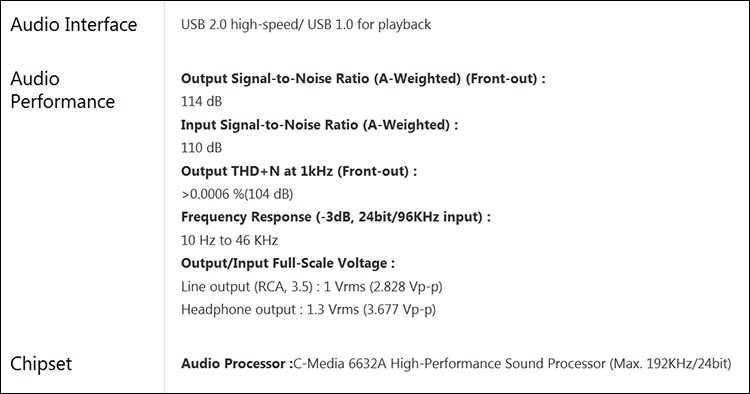
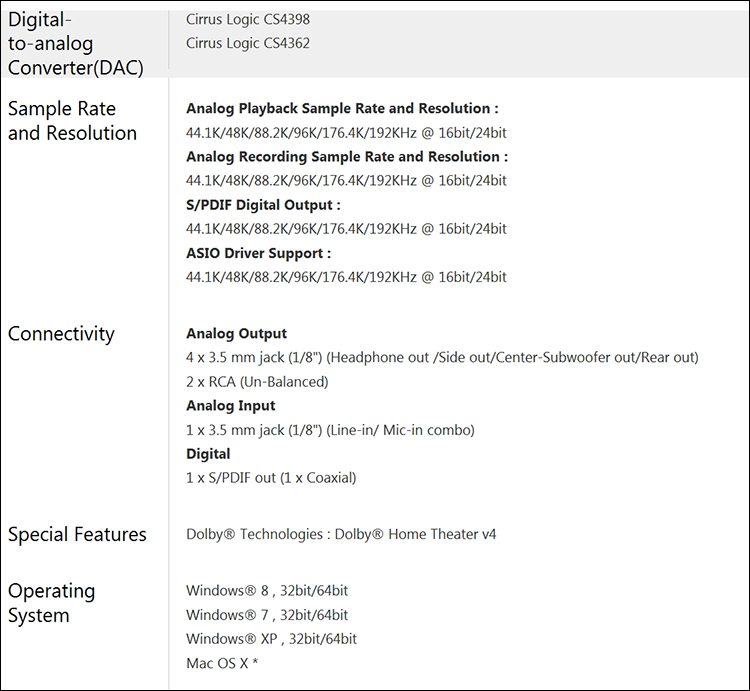
Features
The wonder of incredible compact audio!
Xonar U7 serves the needs of PC gamers who want to enjoy strong and clear sound via headphones, and is also ideal for listening to music as it produces much more impactful and detailed audio than onboard hardware. Connecting via USB, it requires no standalone power supply and works instantly setup-free with no need to open the PC case.
Powerful sound from a compact and portable device
Xonar U7 engineering overcomes the space and power supply limitations of other external USB-based audio devices to offer precise and immersive 7.1-channel surround. Sound processing uses 192kHz/24-bit fidelity for true high definition output, maintaining consistent quality across all surround channels.
114dB signal-to-noise ratio (SNR)
Up to 16X audio clarity compared with the SNR ratios of average onboard audio.

Hyper Grounding technology
Exclusive ASUS Hyper Grounding PCB fabrication ensures strong signal insulation to reduce distortion and interference, also known as component crosstalk.


Digital to analog converter (DAC)
High quality Cirrus Logic® CS4398 DAC (digital-to-analog converter) brings clarity with excellent signal-to-noise ratio (SNR) and low total harmonic distortion (THD)
Integrated headphone amplifier pumps up every sound detail
Since many gamers choose to refrain from disturbing others while insisting on the best sound quality, Xonar teams integrate a headphone amplifier on Xonar U7 to boost immersive headphone output.
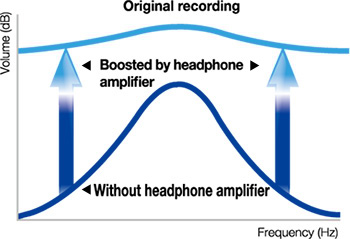
Gamer-friendly design
Microphone and master volume controls
Dedicated controls allow gamers to quickly adjust master and microphone volume without pausing games or going into software menus, ensuring uninterrupted action. The master volume control doubles as a clickable switch for selecting between headphone input (front panel) and speakers (back panel).
USB convenience
Xonar U7 connects to PCs via USB. It also gets power directly from the USB port, removing the need for a power adapter. Combined with its compact dimensions, these turn Xonar U7 into a highly portable audio-enhancer that can be easily carried and placed anywhere.
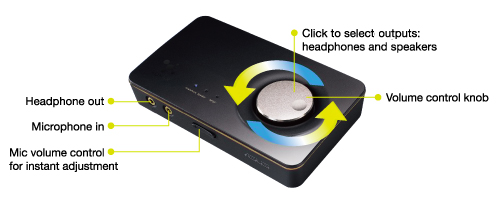
Realistic surround and enhanced sound with new Dolby® Home Theater v4
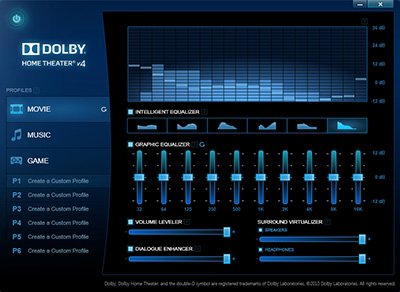
Realistic surround
Surround decoder ― converts 2-channel audio sources to multi-channel, so you experience more immersive sound
Surround virtualizer ― delivers stunning virtual surround playback for standard stereo headphones or speakers.
Sound enhancement
Intelligent equalizer ― allows users to adjust tone dynamically with easy visual controls
Dialogue enhancer ― improves premium clarity for in-game communications
Volume leveler ― helps maintain chosen volume consistently across audio sources
Closer Look
The Xonar U7 hardware device is a smart, compact black box with gold accent.
On top the device there is a stylish volume controller and three LEDs which indicate whether the audio output is set to the speakers, dedicated headphone output, or the SPDIF port. You can select these modes by pressing down the volume controller.

Connecting up the Xonar U7 requires a free USB port. Xonar U7 supports USB 1.0 and 2.0 with a selection switch at the bottom of the device. Full functionality is enabled in USB 2.0 mode and USB 1.0 mode limits the sound card to playback only.

On the front panel you will find a dedicated headphone 3.5mm jack, the microphone / line-in jack, and the microphone volume up & down buttons.

On the rear panel starting from the five jacks on the left are for speakers. The red and white RCA jacks are for front channel in 5.1/7.1 setups and L/R in 2 channel setups. The three 3.5 mm jacks are in order from left to right, Side, Center, and Rear. To the right of the Speaker outputs and left of the USB connector is an SPDIF output.

Inside Look




Component Layout
Detail of all components used inside the device


1. C-Media 6632A - At the heart of the Xonar U7 is a C-Media 6632A Sound Processor. The 6632A supports USB Audio Class 2, which means it does need a driver, but it also means it has a good bit more horsepower for DSP effects, 7.1 channel surround, 24bit/192KHz sampling rates, and tight audio specifications. Specifically designed for use in high-end USB sound cards

2. Cirrus Logic CS4362ACQZ (DAC) – The Cirrus Logic CS4362 are complete, 114dB, 24-Bit, 192kHz, 6-/8-channel, digital-to-analog (D/A) systems that include digital interpolation, fifth-order Delta-Sigma D/A conversion, digital de-emphasis, volume control, and analog filtering.

3. Cirrus Logic CS4398-CZZ (DAC) – The Cirrus Logic CS4398 is a complete stereo audio120dB, 24-bit/192 kHz digital/analog converter (DAC) system. This D/A system includes digital de-emphasis, half dB step-size volume control, ATAPI channel mixing, selectable fast and slow roll off digital interpolation filters followed by an oversampled multi-bit Delta-Sigma modulator, which includes mismatch shaping technology that eliminates distortion due to capacitor mismatch.

4. cFeon EN39LV010 - 1-Megabit (128K x 8-bit ) 4 Kbyte Uniform Sector, CMOS 3.0 Volt-only Flash Memory.

5. Cirrus Logic CS5361-KZZ (ADC) - The Cirrus Logic CS5361 is a complete audio 114 dB, 192 kHz Stereo A/D Converter (ADC) for digital audio systems. It performs sampling, A/D conversion and anti-alias filtering, generating 24-bit values for both left and right inputs in serial form at sample rates up to 192 kHz per channel.

6. 7. ZA3 are Texas Instruments LME49726 Series Audio Op Amplifiers. The LME49726 is a low distortion, low noise rail-to-rail output audio operational amplifier optimized and fully specified for high performance, high fidelity applications delivering superior audio signal amplification for outstanding audio performance. The LME49726 has a very low THD+N to easily satisfy demanding audio applications ensuring that the most challenging loads are driven without compromise, with output current greater than 300mA at 5V and dynamic range is maximized by an output that drives 2kΩ loads to within 4mV of either power supply voltage.

8. TPS77601 – At power supply stage Texas Instruments TPS77601 is used. TPS77601 have a fast transient response, 500mA LDO voltage regulator with RESET output and Power Good(PG) output and is stable with a 10µF low ESR capacitor. This combination provides high performance and great reliability.

Software
The Xonar U7 sound card software package consists of two different control panels – Xonar U7 Audio Center and Dolby Home Theater V4.





Drivers were very stable and responsive. Control panel is easy-to-use, accessible and allows you to customize almost anything you want i.e. sample-rate control, environmental emulation effects, headphone gain, virtual headphone surround and more.
Testing
Test System is Sony VIA S-Series Laptop. Model No. VPCSA26GG.

- Intel® Core™ i7-2620M Processor 2.70 GHz with Turbo Boost up to 3.40 GHz
- 8 GB DDR3 RAM
- SSD in RAID 0: 256 GB (64 GB x 4; Serial ATA)
- Windows 8.1 Professional 64-bit
Benchmarks
Xonar U7


Xonar DX

Pros
- Audiophile grade sound quality
- Good headset amp
- Portable
- Easy-to-use software with a lot features
- Stable Drivers
Cons
- No 6.3mm (1/4″) Headphone jack
- No RCA to 3.5mm Audio connector for Speaker Output.
Conclusion
Asus Xonar U7 Sound Card provided us with excellent sound quality during movie, music, and game playback with 7.1 speakers, but even at its maximum headphone volume, the product always left us wanting just a little bit more.
RightMark Audio Analyzer (RMAA) suite showed that Xonar U7 is way better than onboard audio , specially the headphone amp part provided super good audio experience. But in 7.1 audio setup Xonar DX is still better than Xonar U7.
If you are an audio enthusiast, and are looking for a superior alternative to the quality of your laptop or desktop's 2.1 analog onboard sound, then you should without a doubt consider this sound card.
For the performance, portability, and features that the Asus Xonar U7 Sound Card offers, it is a good audio enthusiast solution.
Manufacturers Info
Site link
Thanks.
Rakesh Sharma